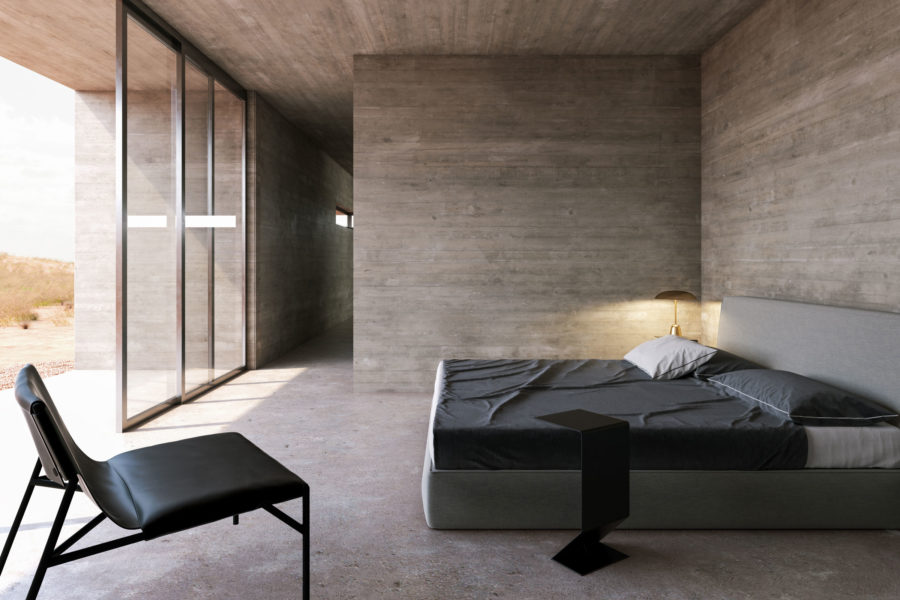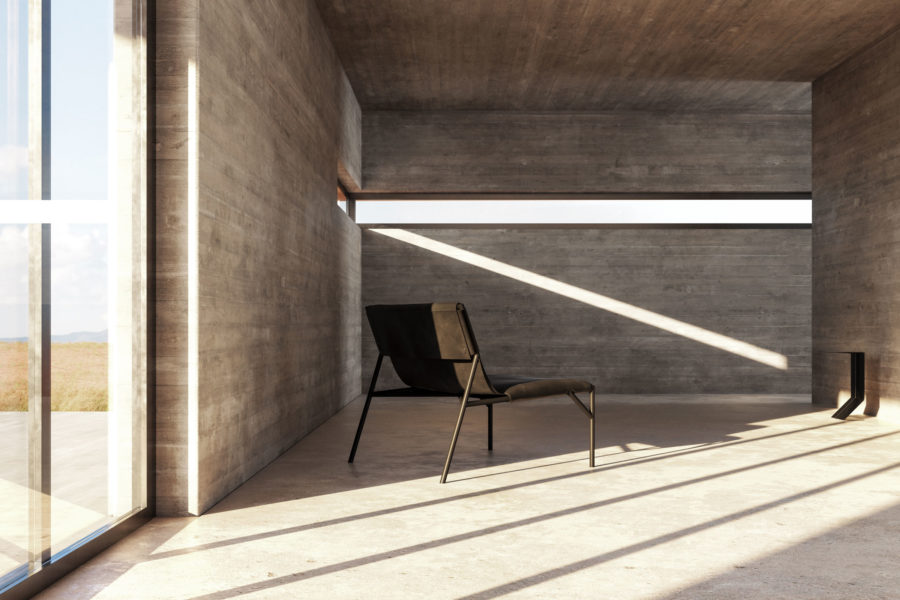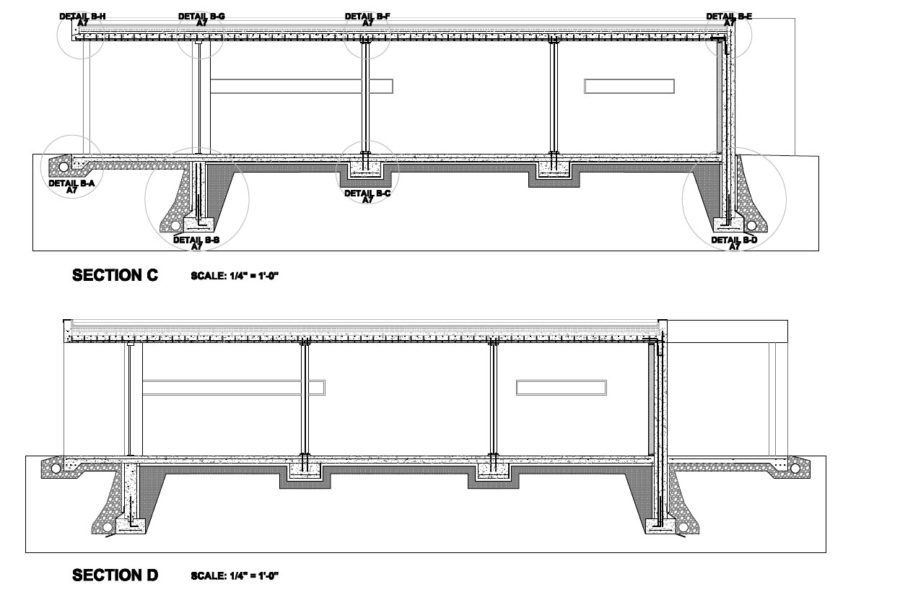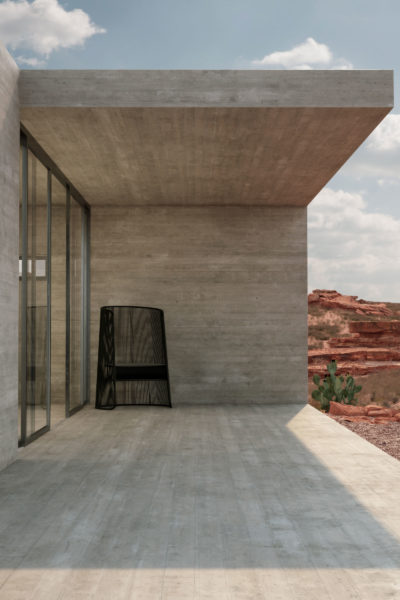Story at a glance:
- Marc Thorpe designed Sharp House as a practice in minimalism with an emphasis on materials and geometry.
- The home features numerous sustainable features, including solar panels and a rooftop water collection system.
- Concrete is the star of Sharp House’s design, which provides natural insulation to keep the house warm at night and cool during the day.
“When I was in architecture school at Parsons, I did all my drawings by hand,” Marc Thorpe says with a laugh. After getting his master’s in architecture, Thorpe moved to Europe to hone his craft, working with the likes of Cappellini and Moroso. “I wanted to work with Italian brands that were of the highest quality but also the avant-garde ones that made dreams real,” he says. After an eventual breakthrough working with these brands, he established his namesake studio in 2010.
Thorpe’s circuitous route through the design world has most recently resulted in the design of Sharp House, a low-slung house just north of Santa Fe. Originally a concept for upstate New York, the design was picked out by client George Sharp and his wife for a retirement home.
“They’re longtime New Yorkers and quintessential minimalists,” Thorpe says. “It’s about keeping it as tight as possible. It was more an execution of minimalism and trying to overemphasize the simplicity of what a space can be functionally.”
- Marc Thorpe’s minimalist Sharp House is intended as a New Mexico escape on five acres. Courtesy of Marc Thorpe Design
- Sharp House is a study of space, light, and shadow, and the design takes into serious consideration its ecological impact. Courtesy of Marc Thorpe Design
The Sharps’ ideals of reductivisim aligned well with Thorpe’s, resulting in a deceptively simple design that made the most of both its materiality and geometry. “Economical design and minimalism go in tandem,” Thorpe says. Concrete is the star of the show here, providing thermal mass and natural insulation so as to keep the house warm at night and cool during the day.
Thorpe recounts that the Sharps insisted on the material: “The design could easily be translated into wood or the like, but they wanted concrete. I personally thought concrete would be a nice material because of its tactility. And it’s an honest material, to communicate exactly what the building is.”
The design is reminiscent of tropical building tradition, with sweeping overhangs covering entryways and recessed ribbon windows cutting into the building’s monolithic concrete facade. The large glass windows to the north and south help mitigate the semi-arid Santa Fe climate, allowing natural cross ventilation. “That’s how the rest of the world builds,” Thorpe says, pointing to other recent projects in which he’s designed for climates in Africa using similar ventilation processes and earth brick instead of concrete.

According to the Marc Thorpe Sharp House is designed as a declaration against the gloss of mainstream architectural practice, which he says tends to focus on exterior “decorative” facades and arbitrary forms. Courtesy of Marc Thorpe Design
To further keep the Sharp House economical, the roof has been layered with solar panels and areas for water collection that supply a non-potable system. The self-sustaining systems in place are a safeguard in the face of the climate change crisis. Thorpe sys, “Water is a huge issue and will become a great issue as our civilization evolves. You need to be able to harvest water and power your house.”

Sharp House was designed with an eye on materials and geometry. The Neo-Brutalist approach to space is reflected as a byproduct in the building’s appearance. Courtesy of Marc Thorpe Design
The roof serves a secondary, much dreamier purpose, too—stargazing. Technically the roof offers access to maintain the solar and water systems. “But you can totally just hang out on the roof and watch the stars,” he says. The use of every surface of the house is an intentional move on Thorpe’s part. “There isn’t really a front or a back,” he says. “In the tradition of Frank Lloyd Wright, he designed his houses with no real entry. It was more a work of art where you’re forced to engage with the house on all sides and explore it like you would explore a piece of sculpture.”

Courtesy of Marc Thorpe Design
With Sharp House, Thorpe makes an argument for slowing down and appreciating the phenom of interacting with a space. His favorite part of the house? The long ribbon windows. “Those are really unique moments that, through the transition of the day, allow light to cut through the space and create lines that define. It’s a very beautiful moment where you have time to stop and reflect. Why not embrace those moments?”

Courtesy of Marc Thorpe Design





